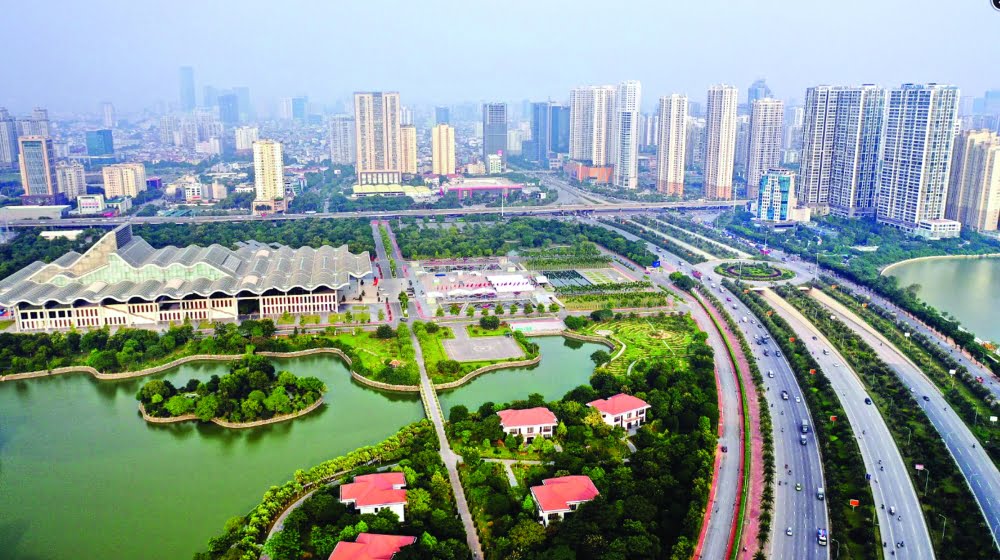Located in the southwestern part of Hanoi, Nam Tu Liem District has been rapidly developing into a bustling urban hub over the past few years.
With its strategic location, modern infrastructure, and a growing array of amenities, Nam Tu Liem has become an attractive destination for both residents and businesses.
In this article, we will explore the various aspects that make Nam Tu Liem District a vibrant and promising area in Hanoi as we look ahead to 2024.
Let’s explore the fascinating things in Nam Tu Liem District together with TripWorldwide.
More: About Long Bien District in Ha Noi 2024
History of Nam Tu Liem District
The district of Nam Tu Liem was established in the fourth year of the Vu Đuc era during the Tang Dynasty, under the jurisdiction of Tu Chau (later renamed Nam Tu Chau), which consisted of three districts: Tu Liem, O Dien, and Vu Lap.
The name “Tu Liem” originates from the Tu Liem River. In reality, the two words “Tu Liem” are a phonetic transcription of the place name “Chem” (tlem).
During the Ly and Tran dynasties, Tu Liem District was part of the Đong Đo administrative division. During the Ming Dynasty, it was under the jurisdiction of Giao Chau.
Under the Le Dynasty, Tu Liem District was placed under the Quoc Oai administrative division and Son Tay fortress. Prior to 1831, Tu Liem was a district under the Quoc Oai administrative division in Son Tay province. In the twelfth year of Minh Menh’s reign (1831), it was placed under the Hoai Đuc administrative division in Hanoi province (now known as Nam Tu Liem district in Hanoi and the southern part of Hoai Đuc district). After the establishment of Hanoi province, Tu Liem became a district of the Hoai Đuc administrative division.
After Hanoi was ceded to the French, some communes in Tu Liem District became part of the outskirts of Hanoi, while the remaining portion belonged to Ha Đong province.
Tu Liem District was reestablished by merging the 5th and 6th districts of the former Hanoi (including the communes of Co Nhue, Xuan Đinh, Đong Ngac, Thuy Phuong, Xuan La, Nhat Tan, Quang An, Phu Thuong, and Tu Lien from the 5th district, and Dich Vong, Mai Dich, Nghia Đo, Me Tri, My Đinh, Nhan Chinh, Yen Lang from the 6th district) with some communes from Hoai Đuc and Đan Phuong districts, according to Decision No. 78/QĐ on May 31, 1961, issued by the Vietnamese Government.
On February 19, 1964, Huu Hung commune was divided into two communes: Tay Mo and Đai Mo.
On August 9, 1973, Yen Lang commune was transferred to Đong Đa district (later divided into two wards: Lang Ha and Lang Thuong).
On April 20, 1978, Phu Dien and Minh Khai communes were merged to form Phu Minh commune.
On October 13, 1982, three towns were established: Cầu Giấy (separated from Dịch Vọng commune), Cau Dien (separated from Mai Dịch, My Đinh, and Phu Minh communes), and Nghia Đ0 (formed by dissolving Nghia Đo commune and taking part of Co Nhue commune).
On September 17, 1990, Mai Dich town was established (formed by dissolving Mai Dich commune and adjusting part of Cau Dien town), and Phu Minh commune was divided into two communes: Phu Dien and Minh Khai.
On April 17, 1992, Nghia Đo town was divided into two towns: Nghia Đo and Nghia Tan.
On October 28, 1995, five communes (Tu Lien, Nhat Tan, Quang An, Xuan La, Phu Thuong) with a total natural area of 1,619.9 hectares and a population of 32,080 were separated and merged with three wards (Buoi, Thuy Khe, Yen Phu) of Ba Đinh district to form Tay Ho district.
On November 22, 1996, Nhan Chinh commune was separated with a natural area of 160.9 hectares and a population of 9,229 to establish Thanh Xuan district. Four towns (Cau Giay, Mai Dich, Nghia Đo, Nghia Tan) and three communes (Dich Vong, Yen Hoa, Trung Hoa) with a total natural area of 1,210 hectares and a population of 82,914 were separated to form Cau Giay district.
From then until December 26, 2013, Tu Liem District had 16 administrative units, including Cau Dien town and 15 communes: Co Nhue, Dai Mo, Dong Ngac, Lien Mac, Me Tri, Minh Khai, My Dinh, Phu Dien, Tay Mo, Tay Tuu, Thuong Cat, Thuy Phuong, Trung Van, Xuan Dinh, and Xuan Phuong.
On December 27, 2013, the Prime Minister of Vietnam signed Resolution 132/NQ-CP adjusting the administrative boundaries of Tu Liem District to establish two new districts: Bac Tu Liem and Nam Tu Liem.
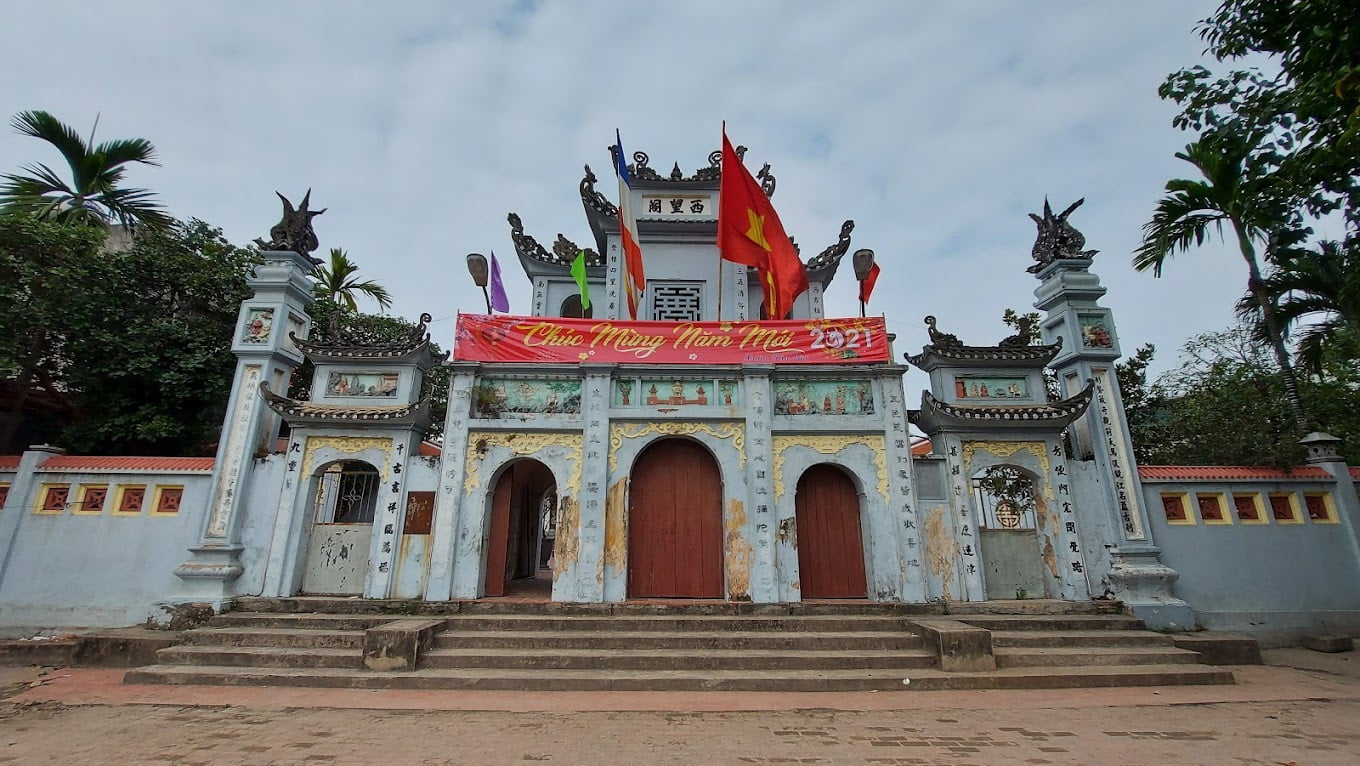
Administrative Divisions Update 07/27/2024
Nam Tu Liem is an inner district located in the central-west part of Hanoi city. It was separated from the former Tu Liem district in 2013. The district covers an area of 3,227.36 hectares (32.27 square kilometers) with a population of 269,076 people as of 2020. The population density is approximately 8,364 people per square kilometer.
Situated in the western part of Hanoi, Nam Tu Liem shares borders with the following areas:
To the east: Cau Giay district and Thanh Xuan district
To the west: Hoai Duc district
To the south: Ha Dong district
To the north: Bac Tu Liem district.
With the aim of developing into a modern and civilized urban area, Nam Tu Liem also serves as an important gateway for trade with other inner districts and suburban areas. With its favorable location, real estate activities are expected to further thrive in the future.
According to the general master plan of Hanoi Capital until 2030 with a vision to 2050, Nam Tu Liem District is one of the core urban areas and serves as the administrative, service, and commercial center of Hanoi Capital.
The urban development plan for Nam Tu Liem District, Hanoi is based on the general master plan to develop it into a new model urban area: green, civilized, and modern.
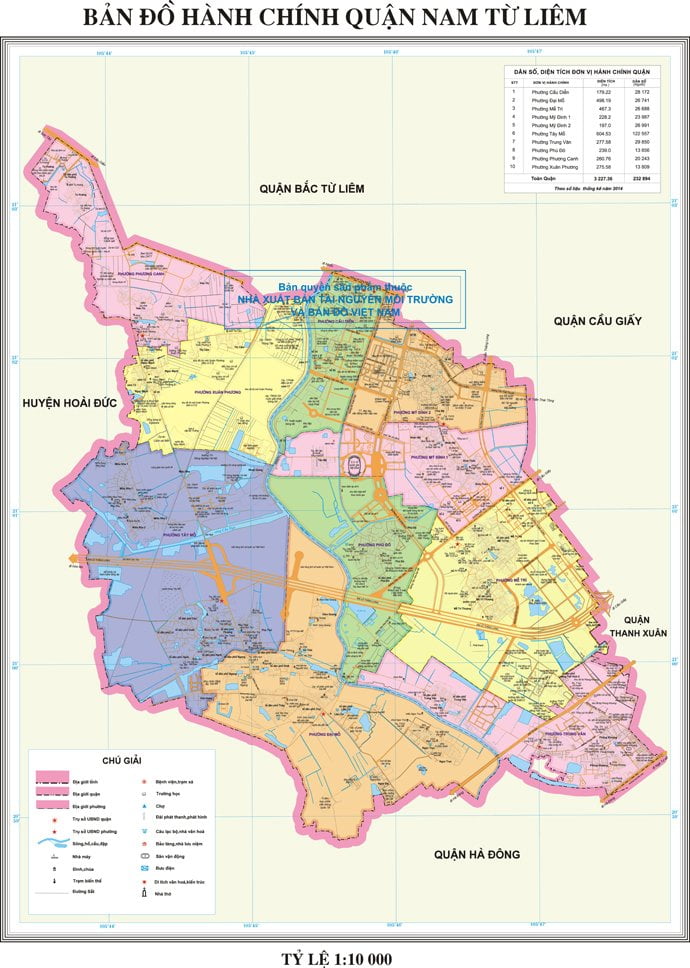
Nam Tu Liem district Hanoi Vietnam postal code Update 07/27/2024
- Central Post Office of Nam Tu Liem District, Hanoi City_Postal Code: 12000
- District Party Committee of Nam Tu Liem District, Hanoi City_ Postal Code: 12001
- People’s Council of Nam Tu Liem District, Hanoi City_ Postal Code: 12002
- People’s Committee of Nam Tu Liem District, Hanoi City_ Postal Code: 12003
- Fatherland Front Committee of Nam Tu Liem District, Hanoi City_ Postal Code: 12004
- Cau Dien Ward, Nam Tu Liem District, Hanoi City_ Postal Code: 12006
- Phuong Canh Ward, Nam Tu Liem District, Hanoi City_ Postal Code: 12007
- Xuan Phuong Ward, Nam Tu Liem District, Hanoi City_ Postal Code: 12008
- Tay Mo Ward, Nam Tu Liem District, Hanoi City_ Postal Code: 12009
- Dai Mo Ward, Nam Tu Liem District, Hanoi City_ Postal Code: 12010
- Trung Van Ward, Nam Tu Liem District, Hanoi City_ Postal Code: 12011
- Me Tri Ward, Nam Tu Liem District, Hanoi City_ Postal Code: 12012
- Phu Do Ward, Nam Tu Liem District, Hanoi City_ Postal Code: 12013
- My Dinh 2 Ward, Nam Tu Liem District, Hanoi City_ Postal Code: 12014
- My Dinh 1 Ward, Nam Tu Liem District, Hanoi City_ Postal Code: 12015
- Phat Tu Liem Post Office, Nam Tu Liem District, Hanoi City_ Postal Code: 12050
- Phat TMĐT Nguyen Co Thach Post Office, Nam Tu Liem District, Hanoi City_ Postal Code: 12051
- Phat Pham Hung Post Office, Nam Tu Liem District, Hanoi City_ Postal Code: 12053
- Xuan Phuong Post Office, Nam Tu Liem District, Hanoi City_ Postal Code: 12054
- Dai Mo Post Office, Nam Tu Liem District, Hanoi City_ Postal Code: 12055
- Internal Delivery Post Office, Nam Tu Liem District, Hanoi City_ Postal Code: 12057
- KHL Thang Long Post Office, Nam Tu Liem District, Hanoi City_ Postal Code: 12058
- KHL My Dinh Post Office, Nam Tu Liem District, Hanoi City_ Postal Code: 12059
- TMĐT Nguyen Co Thach Post Office, Nam Tu Liem District, Hanoi City_ Postal Code: 12060
- TMĐT Thuong Tin Post Office, Nam Tu Liem District, Hanoi City_ Postal Code: 12061
- Thang Long Post Office, Nam Tu Liem District, Hanoi City_Postal Code: 12062
- My Dinh 2 Post Office, Nam Tu Liem District, Hanoi City_ Postal Code: 12063
- My Dinh 3 Post Office, Nam Tu Liem District, Hanoi City_ Postal Code: 12064
- HCC Tu Liem Post Office, Nam Tu Liem District, Hanoi City_ Postal Code: 12098

Exploring Nam Tu Liem District
Culture, historical relics, scenic spots
As part of the Tu Liem region, Nam Tu Liem District has a long-standing historical and cultural tradition, characterized by the vibrant civilization of the Red River and its connection to the historical ups and downs of Thang Long – Hanoi, a city with a thousand years of civilization.
The people of Tu Liem in general, and the people of Nam Tu Liem District in particular, have a deep love for their country, characterized by diligence, creativity, and a history of important contributions to the national liberation struggle and the defense of the capital and the country.
Mai Tri Lower Temple, where the deities Cao Son, Quy Minh, and Ly Nam De were worshiped, was visited by President Ho Chi Minh on January 12, 1958.
In terms of historical relics, Nam Tu Liem District is a place with a rich system of cultural and historical relics, prominent among them are:
- Phu My Temple in My Dinh 2 Ward; Me Tri Upper Village Pagoda and Mai Tri Lower Temple in Me Tri Ward; Mieu Nha Temple in Tay Mo Ward;
- Tu Hoang Pagoda, Thi Cam Pagoda, Hoe Thi Pagoda in Xuan Phuong Ward; Nguyen Xa Temple and the cluster of relics of the Nguyen Quy family church in Dai Mo Ward.
Most of the historical and cultural relics in Nam Tu Liem District are associated with the worship of national heroes, individuals who have contributed to the country, saints, craft ancestors, and local deities.
The Tay Mo Village Temple in Tay Mo Ward, with its 19th-century architectural style, worships the military leaders of the Trung Sisters, Dinh Bach Nuong and Dinh Tinh Nuong, who mobilized troops in the Tu Liem region for the uprising.
The cluster of relics in Dai Mo Ward includes Lac Tho Temple, garden shrine, Canh family shrine, and the Nguyen Quy family church, where famous individuals such as Nguyen Quy Duc, Nguyen Quy An, and Nguyen Quy Kinh are worshiped.
Phu Thu Temple in Tay Mo Ward worships the tin-making craft ancestor, Hong Dong Bach Tinh Tien Thanh. Thanks to the cultural traditions passed down from generation to generation, the relics in Nam Tu Liem District have always been highlights of Hanoi, preserving many traditional artistic values.
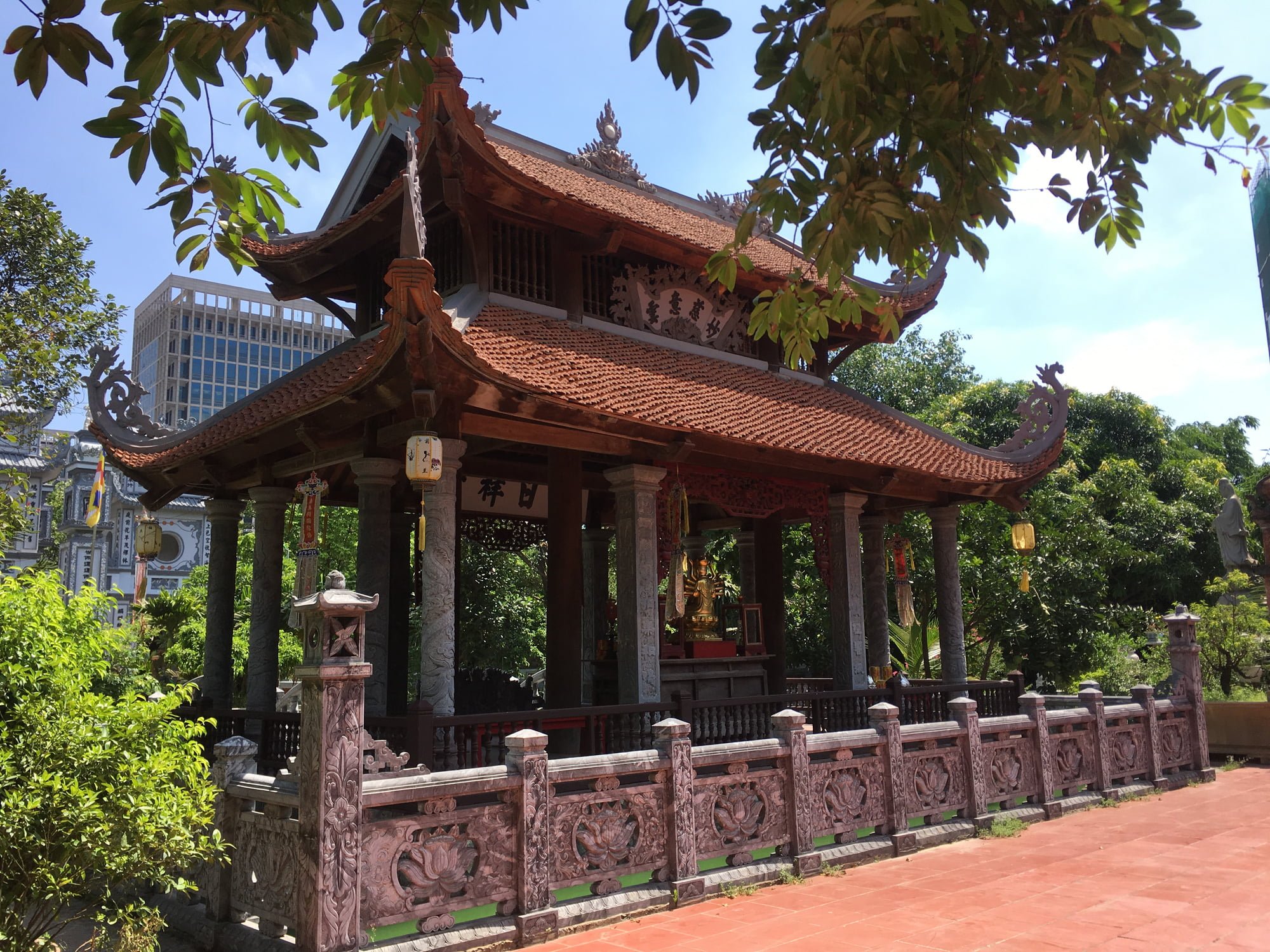
In particular, Mai Tri Lower Temple, where the deities Cao Son, Quy Minh, and Ly Nam De were worshiped, was visited by President Ho Chi Minh on January 12, 1958. He spoke at the temple’s courtyard with over 200 delegates from suburban communes, encouraging active agricultural production and awarding badges to individuals with outstanding achievements.
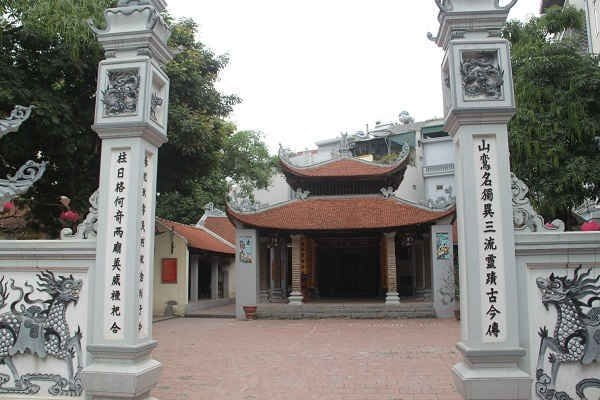
By promoting these good traditions, the Party Committee, government, and all social classes in Nam Tu Liem District are steadily progressing on the path of industrialization and modernization, gradually building the homeland into a civilized and beautiful urban area, and continuing to make important contributions to the overall cause of Hanoi and the country.
Nam Tu Liem District Architecture
This is an area with many notable structures, such as the My Dinh National Stadium, which can accommodate over 60,000 people and is the second-largest stadium in Vietnam.
It regularly hosts major tournaments, sports events, international festivals, Vietnamese-Korean cultural exchange events, and New Year’s Eve celebrations.
It is a complex that includes a football field, swimming pool, and training facilities for national athletes.In particular, the Born Pink Concert will take place at My Dinh Stadium, Hanoi, on the 29th and 30th of July.
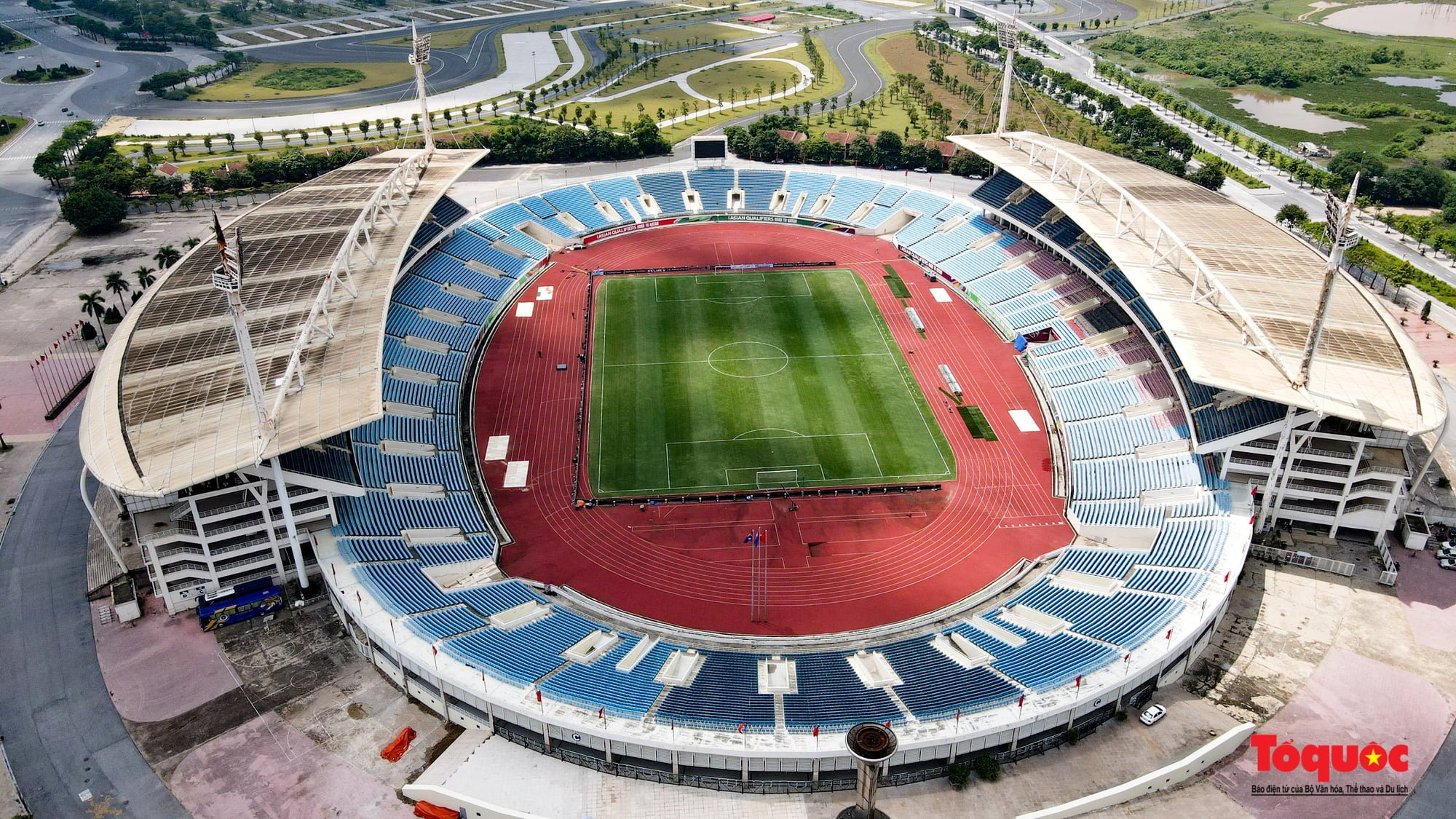
There is the second tallest building in Vietnam, Landmark 72, consisting of luxury apartments, office spaces, and an international hotel.
The district is home to the National Convention Center of Vietnam, the largest multi-purpose facility in the capital. Designed by a German engineer with the concept of “soaring waves of the East Sea,” the building showcases unique architecture.
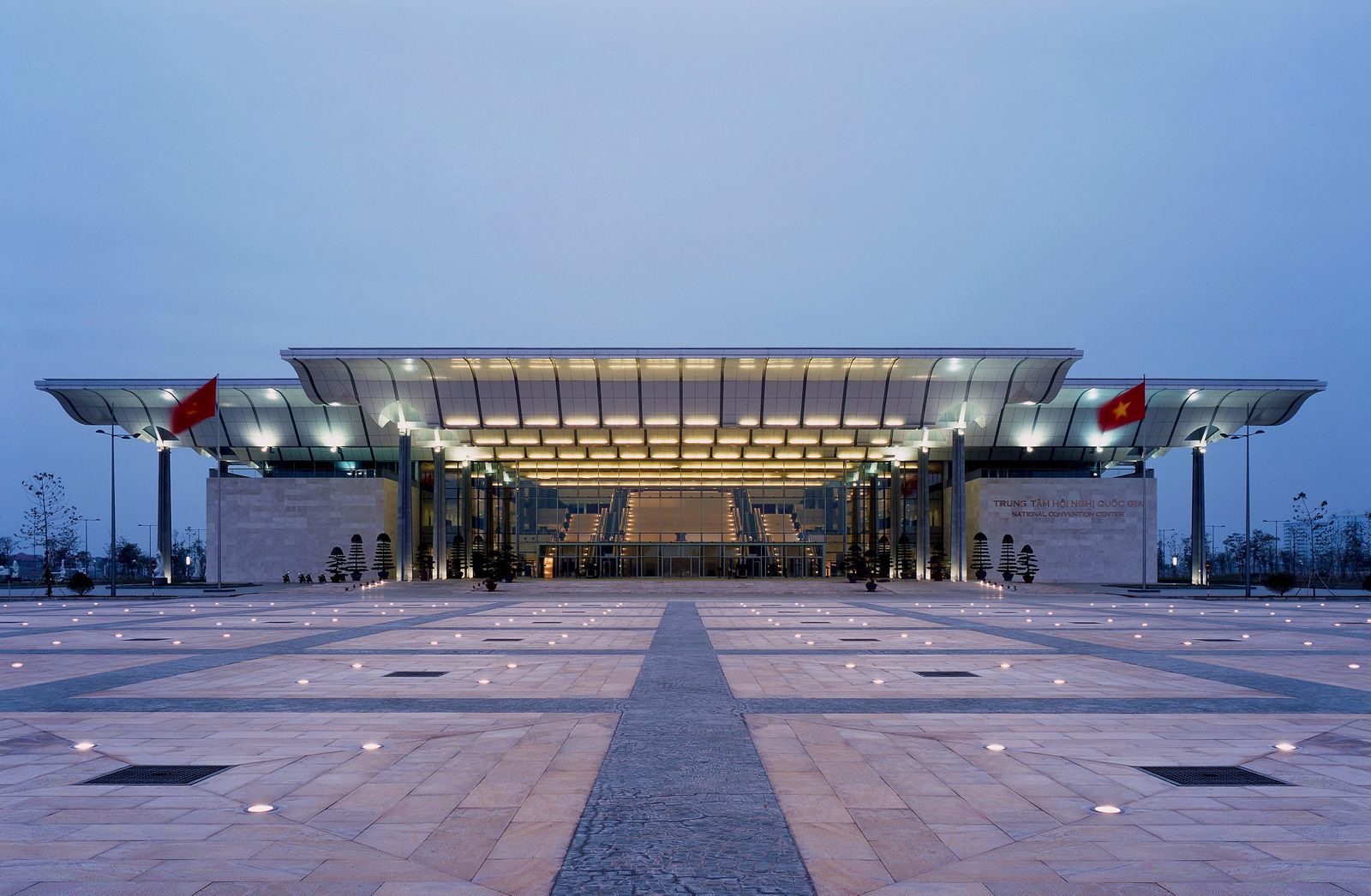
It hosts numerous significant national and international events, serving as a platform to promote the image of Vietnam globally. Adjacent to it is the Hanoi Museum, designed as an inverted pyramid, showcasing artifacts from different historical periods of Vietnam.
Nearby is the 5-star JW Marriott hotel, with its distinctive dragon-inspired design. The top floor features a golfing area and specially equipped hotel rooms for presidents and heads of state, offering bulletproof protection.
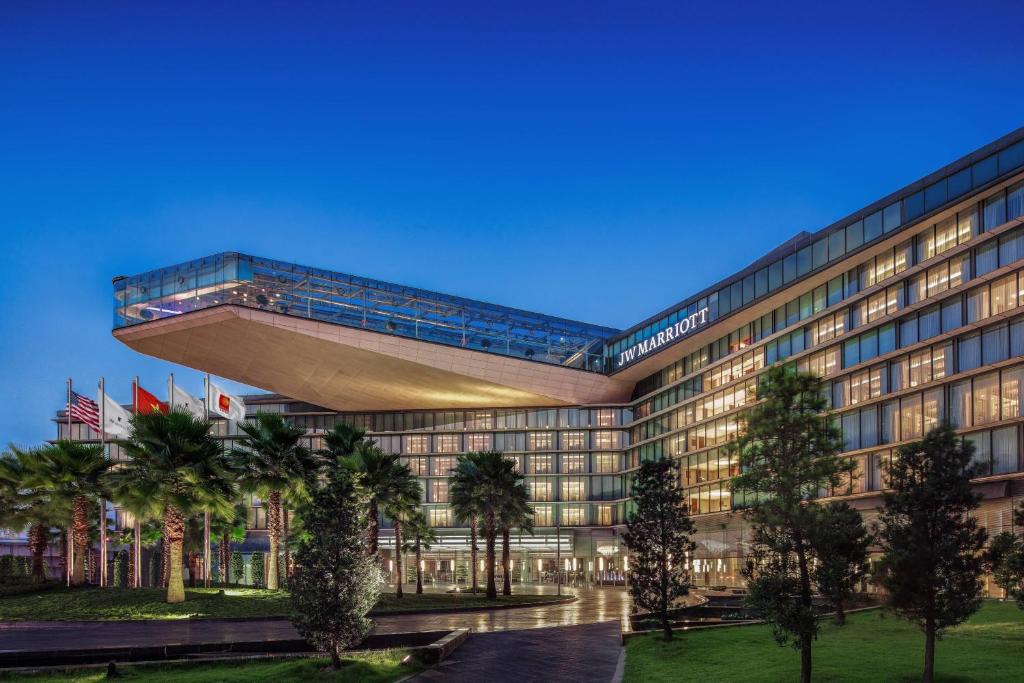
The district is home to several large urban areas, including Vinhomes Gardenia, Xuan Phuong, Tay Mo, Dai Mo, Phung Khoang, The Garden Commercial Center, My Dinh 1, My Dinh 2, My Dinh – Me Tri, and Cau Dien.
Other projects include the luxury apartment complex Iris Garden on Tran Huu Duc Street, and The Sun Me Tri, located opposite the 72-story Landmark.
Additionally, there is the mega-project VinCity Sportia, which has a prime location in Tay Mo and Dai Mo wards. Covering an area of up to 280 hectares, the project features a leading sports park in Southeast Asia, with over 1,000 outdoor gym machines, 200 diverse sports fields, 8 swimming pools, and a cluster of utility parks such as an aerobic park, dance park, outdoor activities park, mountain biking park, and kayak boating area.
The Imperia Eden Park shopping center is located on Le Quang Dao Street, boasting a range of high-class amenities.
As a place of religious significance, there is Phung Khoang Church, located at 161 Phung Khoang Street, Trung Van Ward. The church is situated 10 km from the center of Hanoi and was built in 1910, following a design inspired by French neoclassical architecture. The church harmonizes the church building and the presbytery with the surrounding landscape. The space here is very typical of the peaceful Vietnamese countryside.
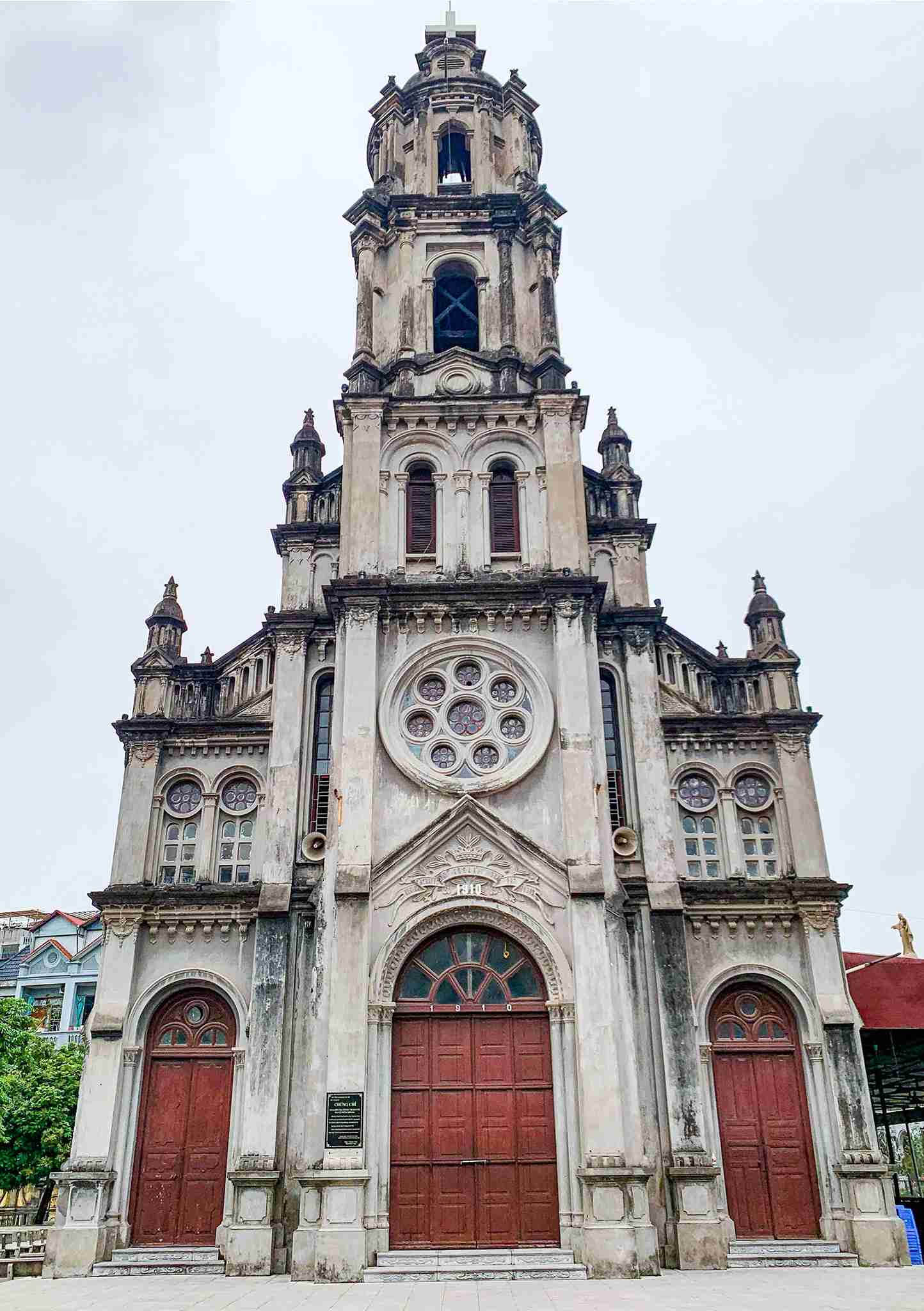
The district also features a unique village called Tay Mo Village, considered as the setting for purely Vietnamese films with its ancient houses. The village has been featured in popular Vietnamese TV series such as “Land and People,” “Ghost Village,” “The Legend of Ngai’s Curse,” “The Spy Wall and Two Wives,” and the annual New Year’s Eve program. The village’s century-old architectural structures contribute to its charm.
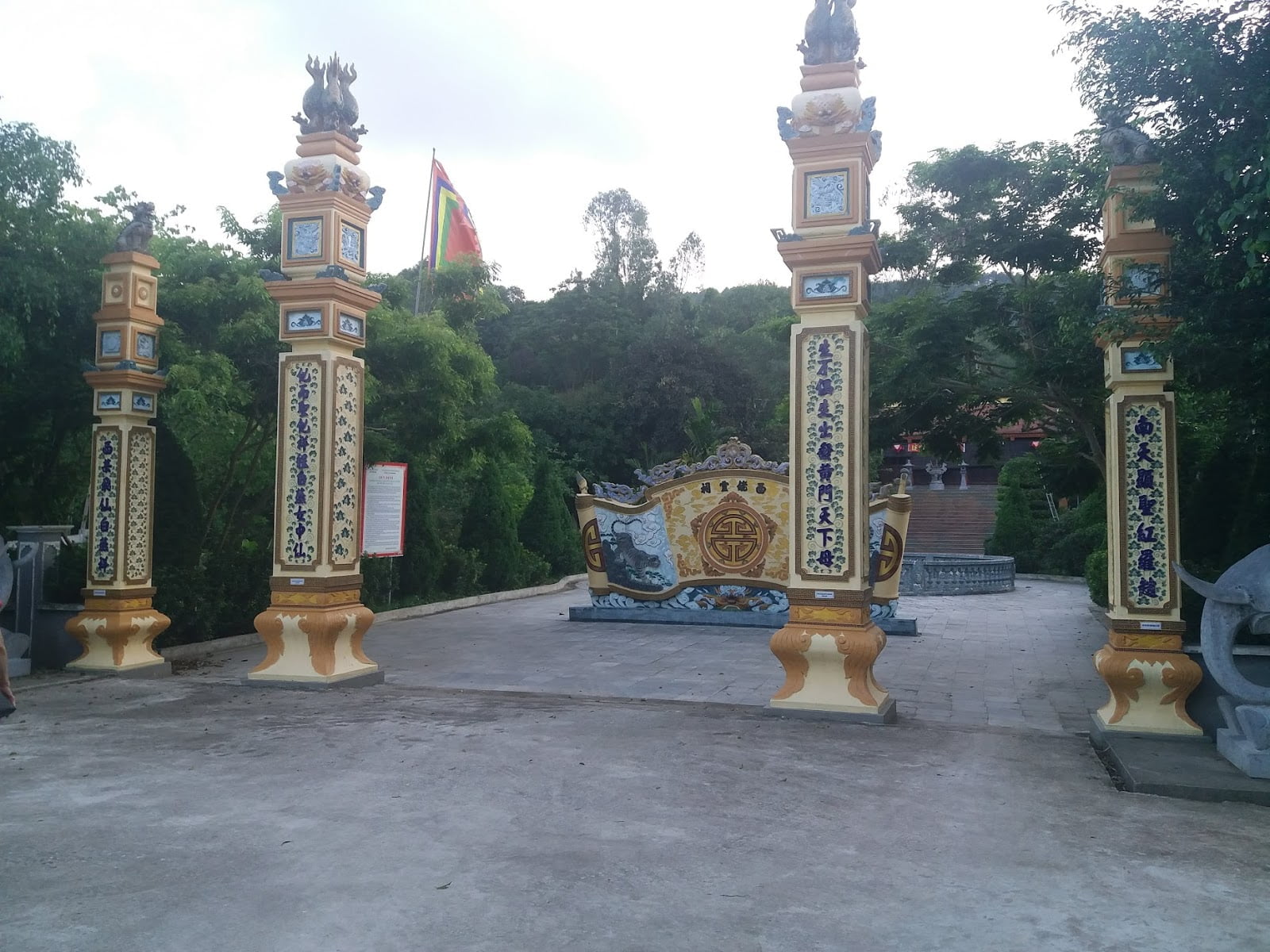
Nam Tu Liem District Cuisine Update 07/27/2024
Famous restaurants worth visiting include Seoul Garden, the largest and most powerful buffet hotpot and barbecue smokeless chain in Asia, with over 30 locations in various Southeast Asian countries. The restaurant is located in The Garden commercial center, G floor, Me Tri area. They offer a variety of dishes with 50 types of meats and fresh seafood such as salmon, live oysters, grilled oysters, kimchi hotpot, and Thai Tom Yum hotpot.
Mon Hue Restaurant, featuring the culinary essence of the ancient capital, is located in The Manor building, Me Tri Street, My Dinh 1 Ward.
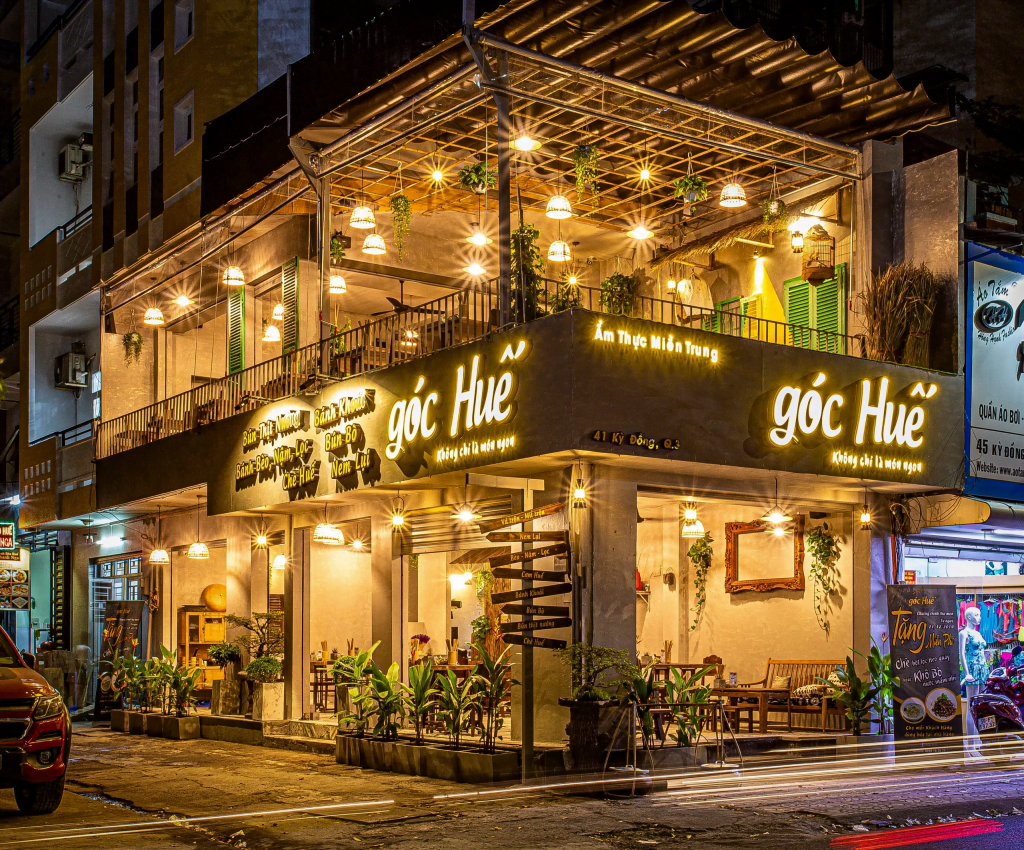
The World Seafood Supermarket Restaurant is situated at 99 Me Tri, on the 1st and 2nd floors of Tower C in the Golden Palace building. They provide over 100 types of high-quality fresh seafood sourced from different coastal regions across the country.

Fresh Steamed Hotpot Restaurant, known for its healthy cooking method, is located at B2 – 05A Vinhomes Gardenia Ham Nghi, My Dinh Ward. The food here captures the natural flavors, with carefully selected ingredients.
For snacks, you can try Thai crispy pancakes at the entrance of Trung Van High School, mixed rice paper salad at Linh Chi, 66 Me Tri Thuong Street, An Giang sweet soup at 35 Phu Don Street, caramelized native chicken at CT2B Le Duc Tho, and salted egg sponge cake with two types of sauce at C6 My Dinh 1. There are also various snack spots in the Nhon market area.
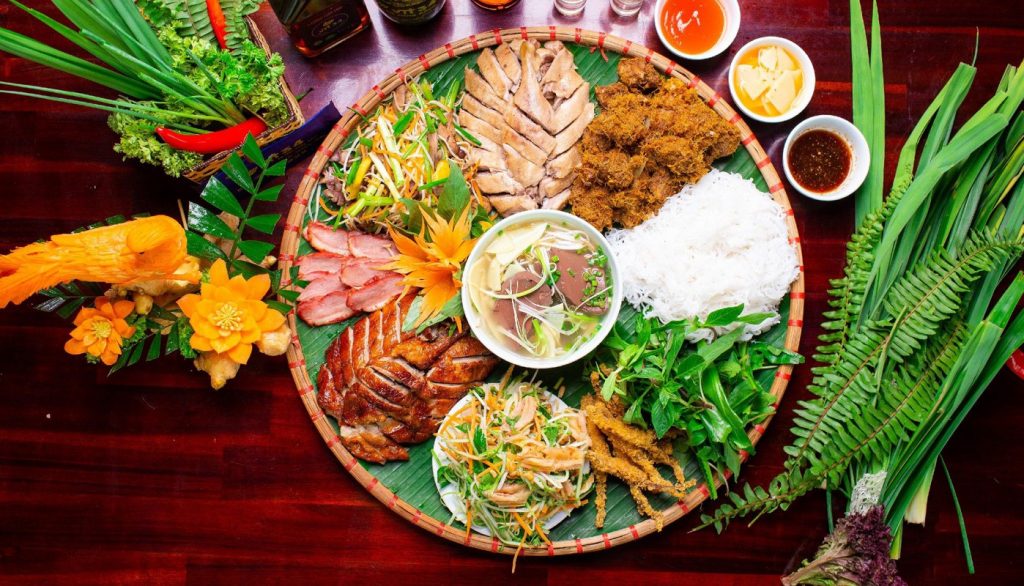
Experience the allure of Nam Tu Liem District Update 07/27/2024
As part of the Tu Liem region, Nam Tu Liem District has a rich historical and cultural heritage that reflects the vibrant civilization of the Red River and its deep connection to the historical ups and downs of Thang Long – Hanoi, a thousand years of civilization.
Nam Tu Liem District, located in Hanoi, Vietnam, offers a captivating experience for both locals and visitors alike. With its vibrant culture, stunning architecture, and delectable cuisine, this district has become a must-visit destination.

